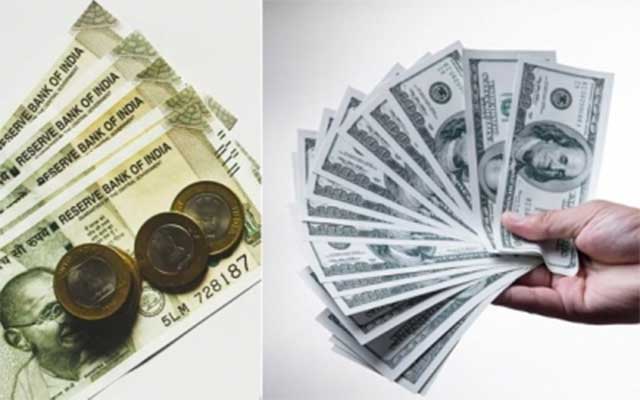By Venkatachari Jagannathan
Chennai, Jul 21 (IANS): The fall in rupee against the US dollar will be pinching the Indian parents and their wards studying and aspiring to study in that country, said experts and parents.
They also said students can look at other countries to pursue their education as the currencies that rupee is appreciating.
The rupee has been depreciating against the dollar in recent times and touched an all time low of 80.05 against a dollar giving jitters to the parents whose wards are studying in the US as well as the aspirants for an US university degree.
The reason? The parents have to pay more rupees to buy a dollar and their wards studying in the US have to tighten their belts.
“Our daughter tightened her spending while studying in the US as we bought dollars and sent her. During her study time too the dollar appreciated,” V.Revathi, a retired banker told IANS.
“The major reasons for the weakening of Indian Rupee against the US Dollar are global factors that include Russia-Ukraine war, rising crude oil prices, tightening of global liquidity and significant FII outflows,” Arun Kumar, Head of Research, FundsIndia had said.
The impact of dollar appreciating against rupee are: imports, overseas travel, US education and others getting costlier while exporters can laugh their way to their banks.
While students can look at other destinations for studies, there are issues of getting a job in those countries unlike in the US.
It is not only the parents whose wards are studying in the US who are worried, but also parents of children who have taken up some employment and are waiting for a relevant visa to continue to stay there.
“My daughter has completed her education and has taken up a job-sort of on the job training. She has taken an education loan in dollars and is paying it back. The worry now is, if she doesn’t get the required visa to stay put in the US, she has to come back. Then the loan repayment will be an issue,” V. Rajagopalan, a private sector employee told IANS.
Indian students who have completed their education in the US and have taken up a job there, are happy now as the dollars they send back home fetches more rupees.
Financial experts believe the rupee’s temporary setback should not totally dampen students’ plans of studying abroad.
It is also important to note that students plan their study abroad activities over several years. It is a well-thought-out decision and is not likely to change quickly.
“While the plunge of the rupee is an unfortunate development, the fluctuation of the value of currencies is the natural result of floating exchange rates, which is true for most major economies,” Sanjay Laul, CEO and founder of M Square Media, a global service provider and international education platform, notes.
“It should not be considered a permanent situation and students should thus avoid making permanent decisions regarding a very important life event such as education,” Laul added.
According to him, despite the expected increase in international education expenses in the US, the country remains a highly attractive international education destination because of the many benefits for the students, one of which is the quality of education that they will get.
While the rupee depreciation turns overseas travel pricey, it seems the pent up demand is there in the market.
“The rupee movement is not a new phenomenon, and despite depreciation against the US Dollar, travel is clearly non-negotiable for Indians – more so with strong pent up demand this year. In fact the Rupee has actually seen appreciation when compared to Euro and Pound,” Rajeev Kale, President & Country Head, Holidays, MICE, Visa – Thomas Cook (India) Ltd told IANS.
“Post over two years of restrictions, pent up demand is driving travel desire and despite an appreciating dollar, there seems to be no stopping the Indian traveller,” Daniel D’Souza, President & Country Head – Holidays, SOTC Travel told IANS.
Indians are smart travellers, and managing their travel budget involves a mere readjustment: curtailing expenses on shopping and dining in favour of must-do experiences/sightseeing.
In addition, customers are also open to a shift in destinations to those that are easier on the wallet which includes Vietnam, Indonesia and Cambodia, Kale added.
D’Souza said, there is a definitive uptick for our closer to home and easy visa destinations like Thailand, Singapore, Bali, UAE; also island destinations like Maldives and Mauritius – with demand up by 30-35 per cent month-on-month.
“With Indians being quintessential value seekers, our internal data reveals that while customers are keen to take their long overdue holiday, they are opting for cost saving options to minimize impact due to the appreciating dollar,” D’Souza added.
For instance, customers are choosing apartment stays and all-inclusive travel passes to save on additional spends; they may also cut down on shopping or dining expenses, D’Souza said.
Fluctuations in the Rupee are also driving demand for India holidays and for value options like domestic cruises that offer all-inclusive pricing- and hence easy on the wallet.
According to Kale, higher demand is being witnessed for locales like Kashmir, Leh-Ladakh, Goa, Kerala, Pondicherry, Coorg, Ooty and Munnar.”













